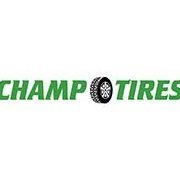Tire Fitment
-
Have you checked out Joe's Latest Blog?
-
By Joe Marconi in Joe's Blog5 commentsI recently spoke with a friend of mine who owns a large general repair shop in the Midwest. His father founded the business in 1975. He was telling me that although he’s busy, he’s also very frustrated. When I probed him more about his frustrations, he said that it’s hard to find qualified technicians. My friend employs four technicians and is looking to hire two more. I then asked him, “How long does a technician last working for you.” He looked puzzled and replied, “I never really thought about that, but I can tell that except for one tech, most technicians don’t last working for me longer than a few years.”
Judging from personal experience as a shop owner and from what I know about the auto repair industry, I can tell you that other than a few exceptions, the turnover rate for technicians in our industry is too high. This makes me think, do we have a technician shortage or a retention problem? Have we done the best we can over the decades to provide great pay plans, benefits packages, great work environments, and the right culture to ensure that the techs we have stay with us?
Finding and hiring qualified automotive technicians is not a new phenomenon. This problem has been around for as long as I can remember. While we do need to attract people to our industry and provide the necessary training and mentorship, we also need to focus on retention. Having a revolving door and needing to hire techs every few years or so costs your company money. Big money! And that revolving door may be a sign of an even bigger issue: poor leadership, and poor employee management skills.
Here’s one more thing to consider, for the most part, technicians don’t leave one job to start a new career, they leave one shop as a technician to become a technician at another shop. The reasons why they leave can be debated, but there is one fact that we cannot deny, people don’t quit the company they work for, they usually leave because of the boss or manager they work for.
Put yourselves in the shoes of your employees. Do you have a workplace that communicates, “We appreciate you and want you to stay!”
-
-
Similar Topics
-
By champtires
Premium Member Content
This content is hidden to guests, one of the benefits of a paid membership. Please login or register to view this content.
-
By Joe Marconi
Premium Member Content
This content is hidden to guests, one of the benefits of a paid membership. Please login or register to view this content.
-
By carmcapriotto
The Weekly Blitz is brought to you by our friends over at Shop Marketing Pros. If you want to take your shop to the next level, you need great marketing. Shop Marketing Pros does top-tier marketing for top-tier shops.
Click here to learn more about Top Tier Marketing by Shop Marketing Pros and schedule a demo:https://shopmarketingpros.com/chris/
Check out their podcast here: https://autorepairmarketing.captivate.fm/
If you would like to join their private Facebook group go here: https://www.facebook.com/groups/autorepairmarketingmastermind
In this podcast episode, Coach Chris Cotton from Auto Fix Auto Shop Coaching introduces his upcoming book designed to help auto repair shop owners enhance their businesses. The book, tentatively titled "The Auto Fix Auto Shop Coaching Owner's Guide to Everything You Didn't Know About Running a Successful Auto Repair Shop," covers topics like goal setting, financial management, staffing, and adapting to future technologies. Cotton invites shop owners to contribute suggestions and request a free copy. The episode, sponsored by Shop Marketing Pros, aims to motivate the bottom 50% of shop owners to grow and succeed in their industry.
Chapter 1: What Do You Want as a Shop Owner? (00:02:13) Discusses the different goals and aspirations of shop owners and the importance of defining personal success.
Chapter 2: Define Your Goals (00:03:08) Highlights the process of setting smart goals, understanding business variables, and keeping an eye on market trends.
Chapter 3: Barriers to Coaching (00:04:13) Explores the common barriers that prevent shop owners from seeking coaching and offers solutions.
Chapter 4: Essentials of Being a Successful Auto Repair Shop (00:05:20) Covers the foundational aspects of running a successful auto repair shop, including meeting customer needs and financial stability.
Chapter 5: The Importance of a Good Chart of Accounts (00:06:18) Emphasizes the significance of a well-maintained chart of accounts for financial management and streamlining.
Chapter 6: The Vital Role of the Income Statement (00:07:26) Focuses on the income statement and its importance in financial review and standardization.
Chapter 7: Determining the Right Car Count for Success (00:08:30) Addresses the misconception of needing more cars for sales goals and the importance of optimizing existing processes.
Chapter 8: The Heartbeat of Auto Repair Businesses (00:09:33) Explores profit centers, margins, and the road to financial health in auto repair businesses.
Chapter 9: Guest Chapter on Car Count and Marketing (00:10:38) Features insights from a guest expert on car count, marketing, and branding for auto repair shops.
Chapter 10: Profit Margins and Parts Matrix (00:11:43) Delves into profit margins, parts matrixes, and strategies for maximizing profits in auto repair.
Chapter 11: Cash Flow (00:12:32) Discusses the unique challenges of cash flow management in auto repair businesses and offers solutions for improving profitability.
Connect with Chris:
[email protected]
Phone: 940.400.1008
www.autoshopcoaching.com
Facebook: https://www.facebook.com/
AutoFixAutoShopCoachingYoutube: https://bit.ly/3ClX0ae
#autofixautoshopcoaching #autofixbeautofixing #autoshopprofits #autoshopprofit #autoshopprofitsfirst #autoshopleadership #autoshopmanagement #autorepairshopcoaching #autorepairshopconsulting #autorepairshoptraining #autorepairshop #autorepair #serviceadvisor #serviceadvisorefficiency #autorepairshopmarketing #theweeklyblitz #autofix #shopmarketingpros #autofixautoshopcoachingbook
Click to go to the Podcast on Remarkable Results Radio
-
By carmcapriotto
As tax season 2024 unfolds, many entrepreneurs find themselves grappling with previous years' unpaid taxes, alongside the looming obligations for the current year. This episode gets into practical solutions for managing tax debt, with real-life advice and expert insights to navigate this challenging aspect of business ownership.
• Understanding Your Options with the IRS: Setting up a payment plan with the IRS is the most common recourse for those unable to pay taxes in full. Learn about the prerequisites, process, and potential pitfalls. How does the IRS view income versus payroll tax debts? What are the crucial differences that could affect your business?
• The Truth About Offers in Compromise: Offers in Compromise (OIC) might seem like a silver bullet for tax woes, but they're often misunderstood and not as easily attainable as advertised. I I try to demystify OICs, outlining the qualifications, processes, and the reality behind settling tax debts for "pennies on the dollar." Why are these offers rarely the best solution for most taxpayers?
• Practical Tips and Real-World Strategies: Beyond understanding IRS mechanisms, this episode provides actionable advice for managing and potentially settling tax debts. From negotiating with state tax authorities to leveraging existing assets and income for a better outcome, learn strategies that could save your business significant amounts of money and stress.
Thanks to our partners, NAPA TRACS and Promotive
Did you know that NAPA TRACS has onsite training plus six days a week support?
It all starts when a local representative meets with you to learn about your business and how you run it. After all, it's your shop, so it's your choice.
Let us prove to you that Tracs is the single best shop management system in the business. Find NAPA TRACS on the Web at NAPATRACS.com
It’s time to hire a superstar for your business; what a grind you have in front of you. Great news, you don’t have to go it alone. Introducing Promotive, a full-service staffing solution for your shop. Promotive has over 40 years of recruiting and automotive experience. If you need qualified technicians and service advisors and want to offload the heavy lifting, visit www.gopromotive.com.
Paar Melis and Associates – Accountants Specializing in Automotive Repair
Visit us Online: www.paarmelis.com
Email Hunt: [email protected]
Get a copy of my Book: Download Here
Aftermarket Radio Network
Click to go to the Podcast on Remarkable Results Radio

-
By NATURE
Hey everyone. I'm planning on opening in about 3 weeks and am looking for a credit card processing company. Are there any geared for our type of business? Does anyone recommend Intuit for it's ease of integration with Quickbooks? I'll be doing around $10,000 a month in CC payments averaging $200.00 per RO. Payments are predominately Visa or Mastercard swiped. A very small percentage of Amex, Discover or over the phone. If there is a company name that a lot of you experienced members would recommend, I would like to hear it.
-
-
-
Our Sponsors





.thumb.jpg.2b345efc275b9df0af2bbb306a10a78a.jpg)













Recommended Posts
Create an account or sign in to comment
You need to be a member in order to leave a comment
Create an account
Sign up for a new account in our community. It's easy!
Register a new accountSign in
Already have an account? Sign in here.
Sign In Now